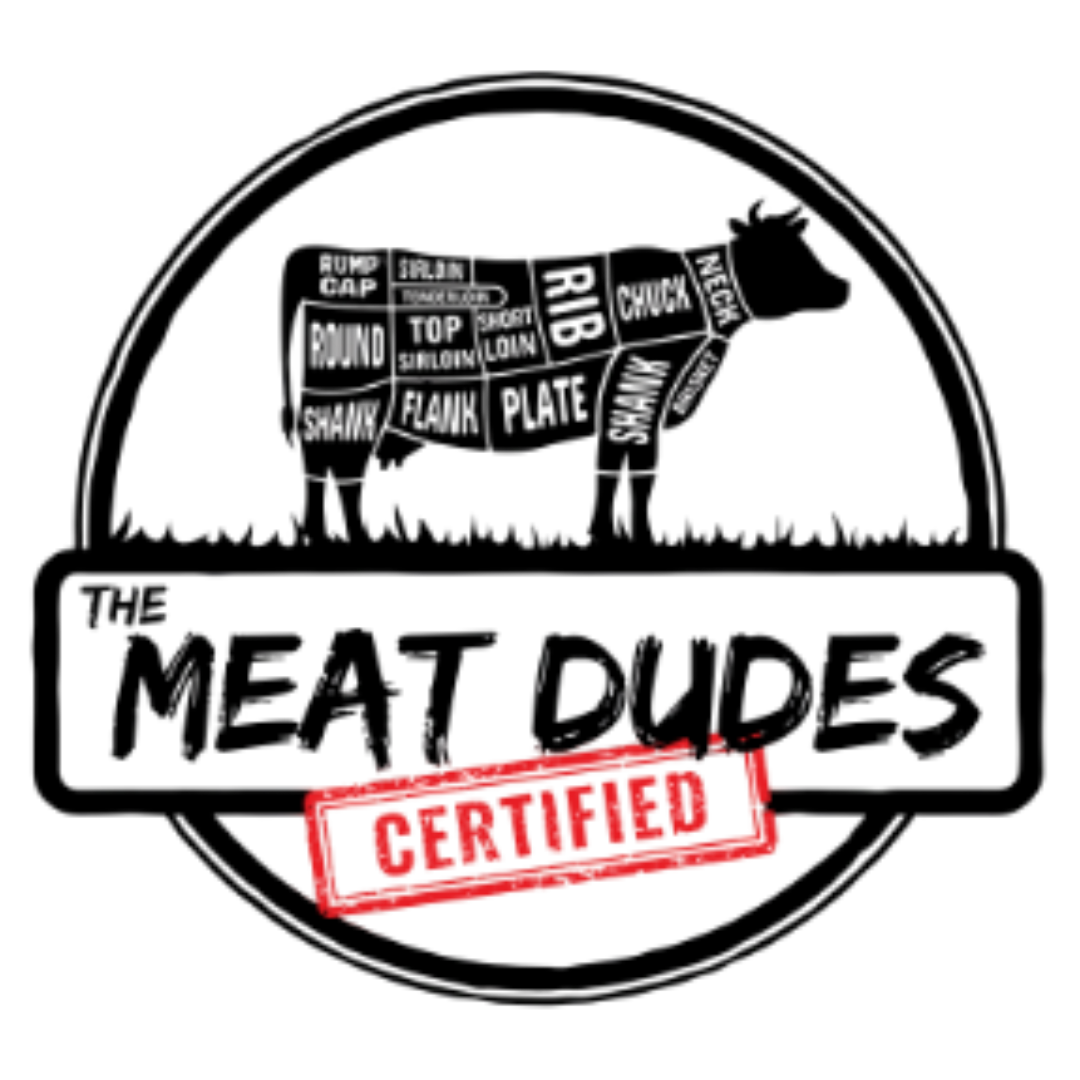If you’ve ever wondered why one rancher raises cattle one way and another does it completely differently, this episode is your map. I sat down with Tyler McCann of Wyoming Cowboy Cuts—a first-generation rancher married into a fifth-generation family—to talk about terroir, transparency, upcycling, why you need to “know your rancher, and know your beef” and how that might be the single best steak tip you’ll ever get.
From Denver kid to high-desert rancher
Tyler didn’t grow up branding calves; he grew up in downtown Denver and worked around restaurants before life led him to central Wyoming and a commercial herd of ~600 mother cows. That outsider-meets-insider perspective matters: he’s seen both sides of the steak—what it takes to raise great beef and what it takes to make it sing on a plate.
Geography decides a lot more than you think
Tyler’s place sits in high-mountain desert—one of the driest pockets in North America. Picture a summer range that’s 56 square miles in one pasture, wild horses that laugh at fences, and cattle walking long distances for water. You don’t rotationally graze that with a whiteboard. You adapt.
That’s the episode’s first big lesson: ranching choices are usually geographic, not ideological. Before you judge a label, ask where and how the animal was raised. Know your terroir, then you’ll know your beef.
The cow is an upcycling machine
One of the coolest parts of Tyler’s program is how cattle turn “unusable” foods into premium protein. (This is a typical practice with good beef ranchers, that’s why you need to know you rancher and ask them how they raise their beef.) When local malt barley doesn’t meet brewery specs or when sugar processing leaves behind beet pulp, cattle convert those byproducts into beef instead of letting them rot. Same story elsewhere: imperfect crops, harvest trims, and local feed streams become nutrition for ruminants. Less waste, more steak.
A simple consumer hierarchy
Tyler’s rule of thumb is wonderfully human, and we agree 100%:
- Beef is better than no beef.
- American beef is better than generic beef.
- Local beef is best of all.
From there, tune to your preference—grass-finished, barley-finished, Wagyu cross, fullblood, regenerative, low-input, you name it. But start local if you can. Shake a hand, see a pasture, ask a question.
Labels vs. practices
We talk a lot about “grass-fed,” “organic,” “regenerative,” and “Wagyu” online. Labels can be helpful shortcuts, but they’re not the whole story. Plenty of ranchers do the right things without chasing certifications; others can afford the label but not the practices you personally care about. Your best filter is a five-minute conversation: “Why do you do it this way?”
Grass vs. grain isn’t a religion
Tyler’s seen fantastic beef from both camps. In his country, finishing with locally available feeds (like that barley or beet pulp) makes sense and tastes great. In a river valley with lush grass, a mature animal can marble beautifully on pasture. It’s not either/or; it’s environment, breed, age, and management.
Antibiotics, reality-checked
Antibiotics make headlines, but in well-managed, lower-density systems they’re rarely needed. Tyler jokes that his bottle expired because he almost never uses it. When an animal gets sick, good ranchers treat it—just like you’d take your kid to a doctor. If a whole herd needs constant treatment, something upstream is broken. Again: ask why.
Feedlots and the future
Are feedlots ideal? No. Are they the only way? Also no. Tyler thinks the future is more creative: ranchers reclaiming value by finishing a portion of their own animals, fencing and grazing marginal acres that can’t be hayed, and capturing local feed streams to upcycle. Will the entire system change overnight? No. Can it change? Absolutely—one practical, local decision at a time.
Use the whole animal (and meet your butcher)
We get into cut nerd-land: Denvers, flat irons, tri-tips, merlot from the round, even “oyster shell” steaks. A skilled butcher can add hundreds of dollars of value to a carcass by fabricating smart, not just defaulting to grind. If you buy a quarter or half, make sure the cut sheet matches how you cook. And yes, a well-marinated eye of round can beat your expectations.
Wagyu without the myths
Wagyu isn’t just A5. In the U.S. you’ll see everything from F1 crosses to purebred to fullblood programs, finished in different ways to fit American plates and budgets. Same genetics can yield different outcomes because the goals, finishing systems, and consumers are different. Most folks don’t want to eat a 16-ounce A5 steak—and shouldn’t. An ounce or two of A5 is a luxury; American Wagyu (often leaner, still richly marbled) is built for a full plate.
The takeaway: meet your rancher
If you remember one thing, make it this: most ranchers are good people working with the land they’ve got to raise good cattle. Meet your local producer, hear their story, and taste their beef. When you understand the “why” behind their choices, you’ll know exactly what you like and why you’re buying it.
Quick ways to put this into practice
- Visit a farm day or farmers market. Ask, “What does our local environment make possible here?”
- Try a finishing method you’ve never had. Barley-finished? Grass-finished? Carrot-finished? Compare, don’t crusade.
- Buy a new cut and ask for cooking advice. Denvers, flat irons, tri-tips, shanks—level up flavor and reduce waste.
- If you can, buy local. Fewer miles, more connection, better stories around your table. Know you rancher, know your beef.
Thanks to Tyler McCann of Wyoming Cowboy Cuts for the straight talk and stories. Conversations like this are why we started The Meat Dudes—to cut through the noise with real ranchers, real chefs, and real-world answers.
Want the full discussion? Listen to the episode with Tyler on The Meat Dudes Podcast, then tell us your favorite local beef find and how you cooked it.


